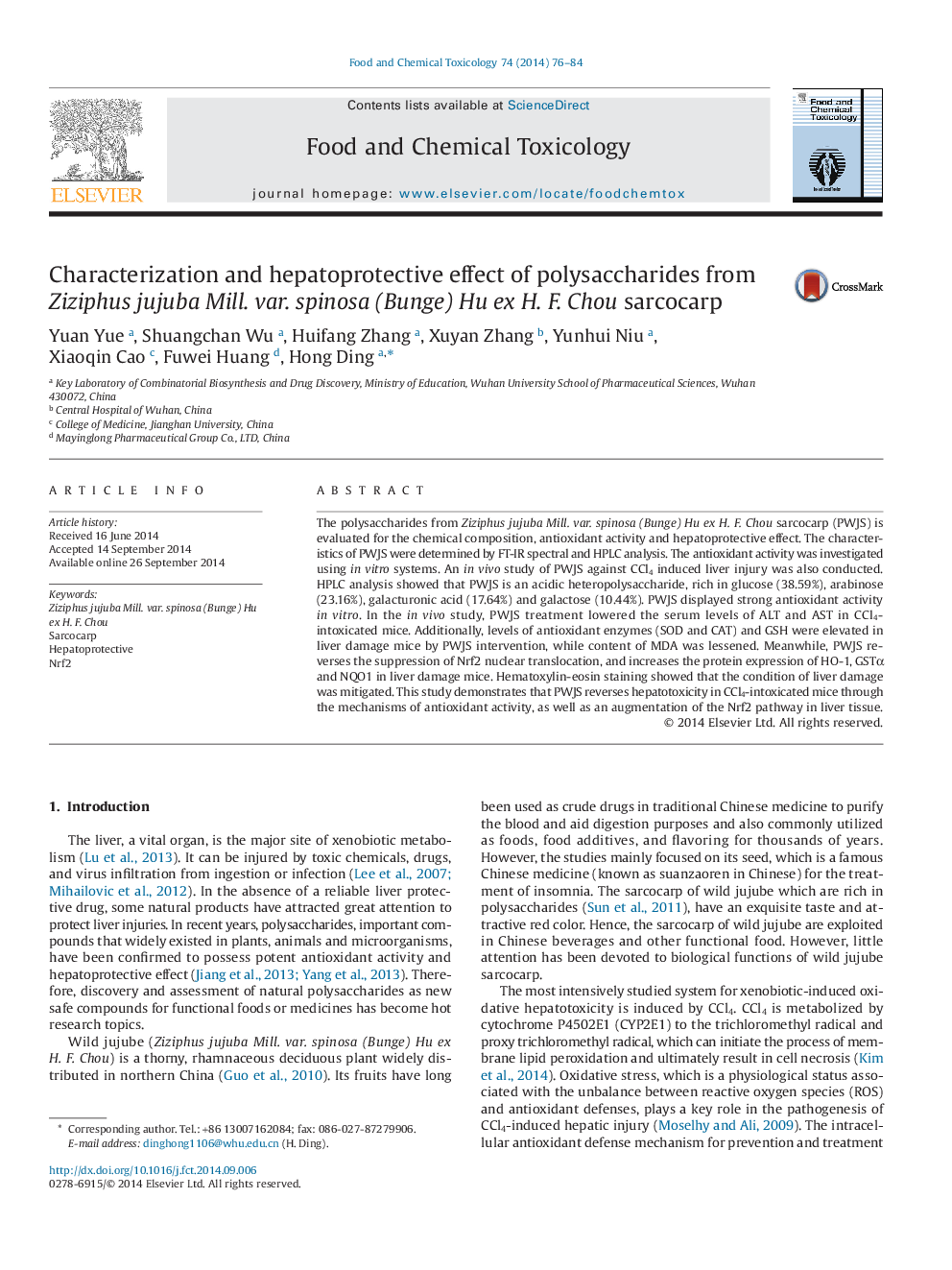| Article ID | Journal | Published Year | Pages | File Type |
|---|---|---|---|---|
| 5849956 | Food and Chemical Toxicology | 2014 | 9 Pages |
â¢We get polysaccharides from Ziziphus jujuba Mill. var. spinosa (Bunge) Hu ex H. F. Chou sarcocarp.â¢Characterization of PWJS.â¢PWJS reverses hepatotoxicity in CCl4-intoxicated mice.â¢PWJS reverses hepatotoxicity through antioxidant activity, as well as an augmentation of the Nrf2 pathway.
The polysaccharides from Ziziphus jujuba Mill. var. spinosa (Bunge) Hu ex H. F. Chou sarcocarp (PWJS) is evaluated for the chemical composition, antioxidant activity and hepatoprotective effect. The characteristics of PWJS were determined by FT-IR spectral and HPLC analysis. The antioxidant activity was investigated using in vitro systems. An in vivo study of PWJS against CCl4 induced liver injury was also conducted. HPLC analysis showed that PWJS is an acidic heteropolysaccharide, rich in glucose (38.59%), arabinose (23.16%), galacturonic acid (17.64%) and galactose (10.44%). PWJS displayed strong antioxidant activity in vitro. In the in vivo study, PWJS treatment lowered the serum levels of ALT and AST in CCl4-intoxicated mice. Additionally, levels of antioxidant enzymes (SOD and CAT) and GSH were elevated in liver damage mice by PWJS intervention, while content of MDA was lessened. Meanwhile, PWJS reverses the suppression of Nrf2 nuclear translocation, and increases the protein expression of HO-1, GSTα and NQO1 in liver damage mice. Hematoxylin-eosin staining showed that the condition of liver damage was mitigated. This study demonstrates that PWJS reverses hepatotoxicity in CCl4-intoxicated mice through the mechanisms of antioxidant activity, as well as an augmentation of the Nrf2 pathway in liver tissue.
Graphical AbstractsDownload full-size image
